National Nuclear Security Administration, “Artificial Intelligence for Nuclear Deterrence Strategy 2023,” DOE/NNSA-0145. 2023
This strategy describes how the ASC program plans to deploy artificial intelligence methods in the unique high-security and high-consequence environment in which the NNSA must operate. As we look to the third decade of the ASC program, the dedicated and talented laboratory staff will diligently work to blend the very best of our high-performance modeling and simulation capabilities with novel artificial intelligence tools, ensuring that ASC stays at the forefront of scientific delivery in support of the U.S. Stockpile Stewardship Program.
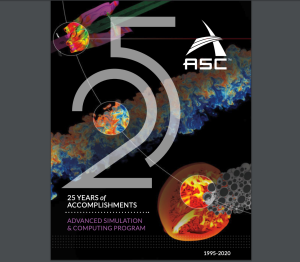
National Nuclear Security Administration, “25 years of Accomplishments in the Advanced Simulation & Computing program,” Sandia National Laboratories (SNL) Report SAND2022-11472 M, 2022.
This report presents the 25-year record of accomplishments of the U.S. Department of Energy’s Defense Programs Advanced Simulation and Computing (ASC) program from its 1995 inception through 2020, including the Academic Alliance program which continues “to serve as an important pipeline to bring both new staff and ideas into the NNSA laboratories.”
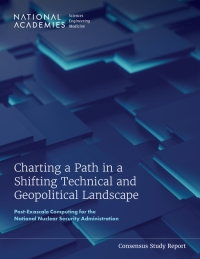
National Academies of Sciences, Engineering, and Medicine, “Charting a Path in a Shifting Technical and Geopolitical Landscape: Post-Exascale Computing for the National Nuclear Security Administration,” The National Academies Press (Washington, DC, 2023).
As mandated by Congress in the 2021 National Defense Authorization Act, a committee was established by the National Academies of Sciences, Engineering, and Medicine to review “the future of computing beyond exascale computing to meet national security needs at the National Nuclear Security Administration.” In the context of the NNSA mission needs, the committee was asked to evaluate future technology trajectories as well as the U.S. industrial base required to meet those needs.
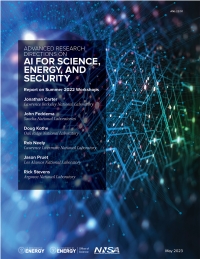
Jonathan Carter, John Feddema, Doug Kothe, Rob Neely, Jason Pruet, and Rick Stevens, “Advanced Research Directions on AI for Science, Energy, and Security,” Argonne National Laboratory (ANL) Report ANL-22/91, May 2023.
This 2023 report, based on a series of 2022 workshops organized by the Office of Science (SC) and the National Nuclear Security Administration (NNSA), lays out a vision for DOE to leverage and expand new capabilities in AI to accelerate the progress, and deepen the quality of mission areas spanning science, energy, and security. This report spans broad DOE interests, including SC and applied energy offices; potential PSAAP proposers are advised to carefully read Chapter 10, which describes specific NNSA and ASC challenges and opportunities.
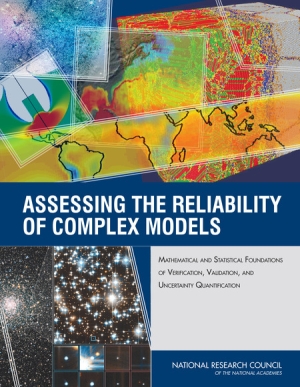
National Research Council , “Assessing the Reliability of Complex Models: Mathematical and Statistical Foundations of Verification, Validation, and Uncertainty Quantification," The National Academies Press (Washington, DC, 2012).
In recognition of the importance of computational simulations and the need to understand uncertainties in their results, the Department of Energy’s (DOE’s) National Nuclear Security Administration (NNSA), the DOE’s Office of Science, and the Air Force Office of Scientific Research requested that the National Research Council study the mathematical sciences foundations of verification, validation, and uncertainty quantification (VVUQ) and recommend steps that would lead to improvements in VVUQ capabilities. Although this report is over a decade old, it provides a useful introduction to VVUQ concepts and methodologies that are still relevant today. Committee Co-Chair Marvin Adams currently serves as NNSA Deputy Administrator for Defense Programs.
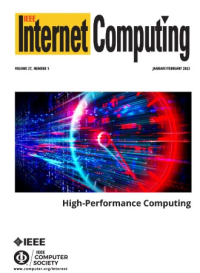
G. Shipman et al., "The Future of HPC in Nuclear Security," IEEE Internet Computing, vol. 27, no. 01, pp. 16-23, 2023.
DOI: 10.1109/MIC.2022.3229037
A perspective from LANL ASC program on divergences between market-driven commercial technology trends and production multiphysics HPC requirements, and the need for continued and deeper co-design “in an agile and coordinated way spanning national laboratories, academia, and industry.”
U.S. Department of Energy, “Public Access Plan: ‘Ensuring Free, Immediate and Equitable Access’ to the Results of Department of Energy Scientific Research,” June 2023.
The Department of Energy Public Access Plan (June 2023) describes how DOE (including NNSA)-funded research and digital data will become more open and available to the public and how DOE will use persistent identifiers to help ensure scientific and research integrity. For publications and data, new policy and implementation guidance will be issued by December 31, 2024, with full implementation required by December 31, 2025. For persistent identifiers (PIDs), the OSTP Public Access Memo requires new policies to be issued by December 31, 2026, with full implementation by December 31, 2027.




